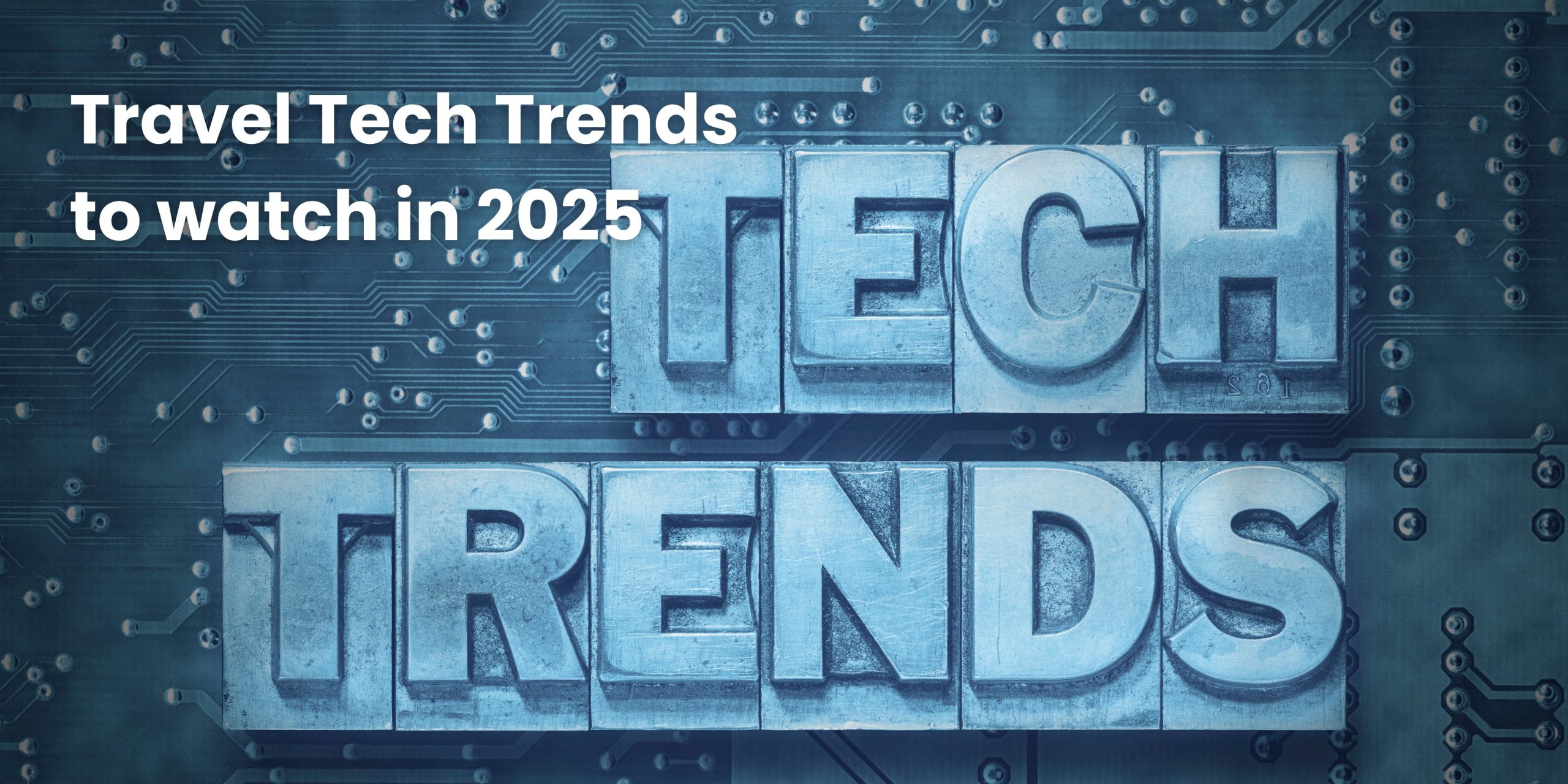The travel industry is accelerating into a new era where artificial intelligence, biometrics, and hyper-personalization converge to create faster, smarter, and more seamless journeys from inspiration to check-in to post-trip loyalty. Below are the key travel tech trends shaping 2025, what they mean in practice, and how brands can implement them to drive organic visibility, conversions, and retention.
1) AI Becomes the Travel Operating System
AI has moved from novelty to infrastructure: powering discovery, dynamic itinerary building, proactive disruption management, and customer service at scale. Travelers are increasingly using generative tools to plan and refine trips, while enterprises deploy AI to automate rebooking, personalize offers, and guide agents with context-aware assistance. Surveys indicate a steady rise in consumer adoption of generative AI for travel planning year over year.
- What’s changing: AI-driven booking assistants, predictive personalization, and real-time trip optimization are now core capabilities—not pilots.
- Why it matters: Brands that integrate AI across the journey reduce friction, lift NPS, and improve conversion through relevant timing and content.
- Action: Build AI-assisted planning and post-booking service flows; craft content for AI discovery surfaces with structured data and itinerary clarity to win inclusion in AI answers.
2) Hyper-Personalization at Scale
Personalization is moving beyond simple segmentation to generative, context-rich experiences that reflect a traveler’s intent, constraints, and preferences across channels. This includes tailored routes, dynamic copy and imagery, inventory prioritization, and micro-merchandising for ancillaries in hospitality and aviation.
- What’s changing: Generative AI composes trip plans, updates them live, and generates custom previews (e.g., visuals) aligned to user context.
- Why it matters: Tailored experiences drive loyalty and higher attachment of ancillaries; in hospitality and air, “mega micro-merchandising” is an explicit strategy.
- Action: Unify data signals, expose inventory attributes, and enable AI-crafted recommendations within compliant governance frameworks.
3) Seamless Airports Through Biometrics
Biometric corridors, e-gates, and self-service touchpoints are expanding globally, compressing time through the airport and improving identity assurance at scale. Travelers increasingly expect document-free flows, while regulators embed biometrics into border programs, accelerating adoption.
- What’s changing: Airports deploy face, fingerprint, and iris to replace manual checks; automation is rising at leading hubs, with aggressive timelines for higher automation targets.
- Why it matters: Shorter queues and higher throughput improve satisfaction and retail revenue; policy initiatives like the EU’s Entry/Exit System reinforce biometric capture norms.
- Action: Design communications for privacy and consent; integrate biometric-ready identity verification into check-in, bag drop, and boarding journeys.
4) Trust, Safety, and AI Governance
As AI saturates planning and service, travelers and regulators demand transparency, accuracy, and data protection. Industry concerns include hallucinations, bias mitigation, data minimization, and liveness/deepfake protections in biometric contexts.
- What’s changing: Heightened regulatory scrutiny and consumer expectations around ethical AI, auditability, and privacy under GDPR/CCPA/BIPA frameworks.
- Why it matters: Trust is a competitive moat—brands that evidence safeguards will win share in AI-mediated discovery and booking.
- Action: Publish AI use policies, implement human-in-the-loop for high-risk decisions, and deploy anti-spoofing and liveness checks in biometric flows.
5) Content Built for AI Discovery
AI surfaces now influence top-of-funnel inspiration and mid-funnel itinerary selection. Travel platforms and providers that present structured, complete, and context-rich information are more likely to be selected by AI systems building plans on the fly.
- What’s changing: Generative tools synthesize reviews, availability, logistics, and constraints into itineraries; clarity and machine-readable structure determine inclusion.
- Why it matters: Winning “position zero” in AI trip builders means clear product data, time/cost feasibility, and trust signals baked into content.
- Action: Implement schema markup (events, attractions, lodging, routes), provide explicit operating hours, transit links, packaging rules, and API access where possible.
6) Real-Time Disruption Management
AI agents are stepping into irregular operations: predicting disruptions, preemptively offering alternatives, and executing re-accommodation with policy compliance. This reduces call spikes and escalations while preserving traveler satisfaction during peak stress moments.
- What’s changing: Integration between inventory systems, messaging, and payments enables end-to-end automated fixes for canceled or delayed segments.
- Why it matters: Proactive service lifts retention and refunds recovery, and prevents negative review cascades.
- Action: Connect PNR, CRM, and policy engines to AI agents that can trigger inventory swaps, vouchers, or rerouting with traveler consent.
7) Sustainable and “Coolcation” Planning Tech
Trip planning tools increasingly incorporate sustainability metrics and climate comfort preferences, enabling travelers to select lower-impact or cooler-destination alternatives without friction. Expect greater visibility of carbon, intermodal options, and shoulder-season recommendations in mainstream flows.
- What’s changing: Real-time sustainability tracking and alternative routing (rail-first, flight-free) gain UX parity with traditional options.
- Why it matters: Aligns with evolving traveler values and regulatory disclosure trends while differentiating brand positioning.
- Action: Embed emissions estimates, train options, and seasonal comfort data into planners; surface sustainable room types and ancillaries as first-class choices.
8) Experience-Led Itineraries and “Calmcations”
Beyond logistics, 2025 travelers seek intentional experiences—calm, restorative, and off-peak choices—often curated with help from AI assistants that understand pace, vibe, and sensory preferences. Platforms that merge wellness, slow travel, and local authenticity into feasible plans will stand out.
- What’s changing: Thematic itineraries like “calmcations” and “noctourism” enter mainstream discourse, supported by AI content and dynamic availability.
- Why it matters: Experience-fit is a primary satisfaction driver; aligning to traveler mood reduces regret and increases repeat bookings.
- Action: Tag inventory for pace, quiet hours, sensory load, and ambience; let AI blend these signals into restorative trip blueprints.
Forward-leaning travel solutions are already blending AI-driven personalization, disruption automation, and frictionless UX to help brands orchestrate smarter journeys end to end—an approach increasingly favored by travel marketers and partnership teams in guest posting ecosystems.





